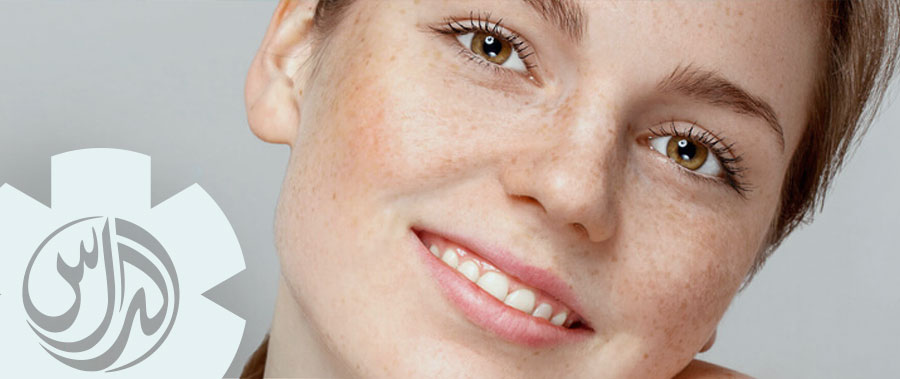
Lentigo and freckles are among the most common forms of skin hyperpigmentation. Both these skin conditions are generally speaking benign, but as they indicate that the skin is sensitive to sun exposure, sun and UV protection measures should be taken. Also, regular check-ups are recommended just to be on the safe side.
The first line of defense is “sunsafe” behavior such as applying sunscreen and wearing protective clothes.
A lentigo (lentigines in plural) is a term used to describe a small, flat, usually brown or black spot with defined edges. There are several types of lentigo, but the most common is so-called solar lentigo. Other name for this frequent skin condition is liver spots or age spots. The name “liver spots” originates from the times when it was believed that lentigo spots were a symptom of liver problems, although they are in no way associated with them. Those pigmented skin lesions usually occur on sun exposed regions of the skin – face, neck, shoulders and hands.
Solar lentigo is, as its name signifies, related to sun exposure as well as to aging, so it is usually found in older people. Lentigo spots generally develop slowly over the years, especially in people who spend much time in the sun. They don’t disappear or become lighter during the winter. Even though lentigo lesions are harmless, it is very important to make sure and differentiate this skin condition from early stages of malignant melanoma. Regardless of the fact that lentigines do not pose any threat to health, people want to remove them for aesthetic reasons.
- Bleaching creams based on hydroquinone or antioxidants;
- Chemical peels. Peels help remove damaged surfaces which are then replaced with new layer of tissue;
- Liquid nitrogen can significantly reduce lentigines;
- Laser therapy. This treatment is superior to cryotherapy for lentigo treatment.
Freckles are small brown spots that usually come in clusters and people with a fair complexion, especially those with red hair, are more prone to freckles, while genetics plays a significant role in their formation. The difference between freckles and lentigines lies in the fact that the former have normal number of melanin-producing cells (melanocytes) while the latter have an increased number of those cells. Freckles tend to proliferate and become darker after being exposed to sun, while lentigo spots do not change. Freckles mainly appear on the face, although they may appear on any area of the skin that is exposed to sun, such as shoulders. Even though freckles are not a skin condition, they are a characteristic of the skin with low level of melanin which makes it more vulnerable to damaging effects of UV radiation. That is why people with freckles have to be extra careful in the sun, and use sunscreen, protective clothes and wide-brimmed hats. There is no need to treat freckles, but some people think that this is an aesthetic problem.
- Hydroquinone – based bleaching creams. Creams containing up to 2% of hydroquinone can be purchased without prescription. When applied for a long period of time, and combined with sun protection, this treatment can be quite efficient.
- Tretinoin and similar products combined with bleaching creams can make freckles become lighter;
- Certain types of freckles can be treated with liquid nitrogen that freezes them off;
- Laser treatment. This is a safe and effective procedure for reducing the number of freckles and making them lighter.
Our experienced dermatologist can help you decide which treatment would be the best solution for your skin problem, so call us and make an appointment.
Book a visit 04 452 998 or by filling the online form